
Feel free to add tags, names, dates or anything you are looking for
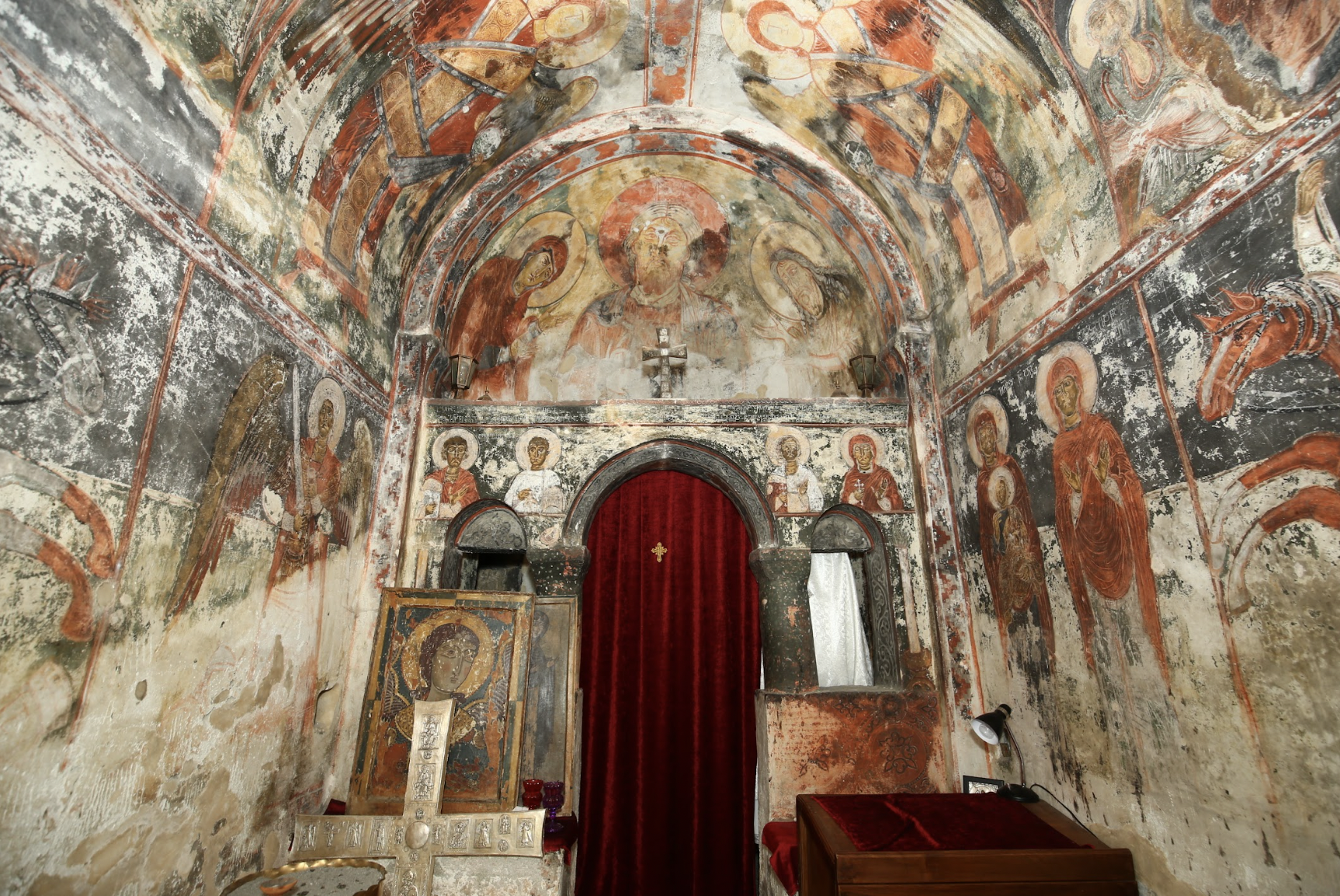
The Church of the Archangels at Iprari is one of three churches that were painted and signed by the ‘King’s’ painter (royal painter) Tevdore. Iprari and the other two churches: that of Lagurka (church of St. Cyricus and Julitta) and the church of St. George at Nakipari, are located near to each other in Upper Svaneti (a mountainous region of north-western Georgia). These painting ensembles hold a special place among medieval Georgian church murals owing to their high artistic qualities, as well as for the fact that they were executed and signed by the same artist. The fact that the inscriptions of all three churches mention the painter is of particular significance, since medieval artists rarely signed their works. Moreover, these inscriptions also contain the painter’s title: ‘King’s painter Tevdore’. It is notable that in spite of Tevdore’s title, none of his wall paintings were commissioned by royalty; the donors are local Aznauri (lower feudal). However, the inscriptions allow us to assume that Tevdore also used to carry out royal commissions. According to the inscriptions the wall paintings of Iprari were executed in 1096, that of Lagurka in 1112 and Nakipari murals in 1030.
The Church of the Archangels at the village of Iprari stands on a small knoll. It is a typical example of local church architecture: a single-nave structure with an apse to the east.

Church of the Archangels at Iprari
Upon entering this small church (4.75x2.60 m) through its only door in the west wall, a visitor’s attention is immediately captured by the monumental Deesis composition in the sanctuary conch, and the masonry chancel barrier that is adorned with paintings and a two-line inscription along its cornice.
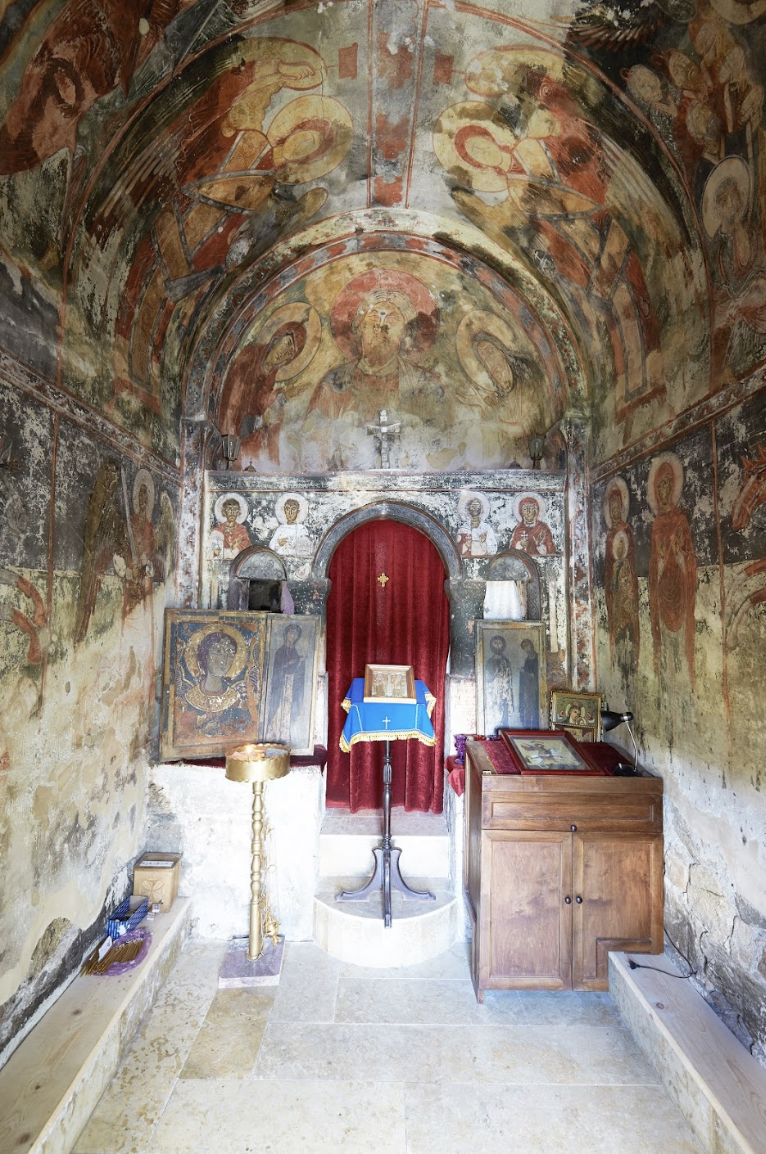
View towards the east
It is almost impossible to pass by without noticing the carefully inscribed Georgian inscription executed in white paint against a green background, lit directly by the rays of sunlight coming through the western window and door opening. The inscription states that the church was painted by the hand of Tevdore, the King’s painter in 1096. The murals at Iprari Church are the earliest works carried out by Tevdore.

Chancel barrier. Murals and inscription. Detail.
Taking into consideration the relatively small size of the church, Tevdore arranged the murals in two zones and restricted the program to three scenes from the Christological cycle: the Nativity and the Baptism on the vault, and the Annunciation in the upper zone of the west wall.
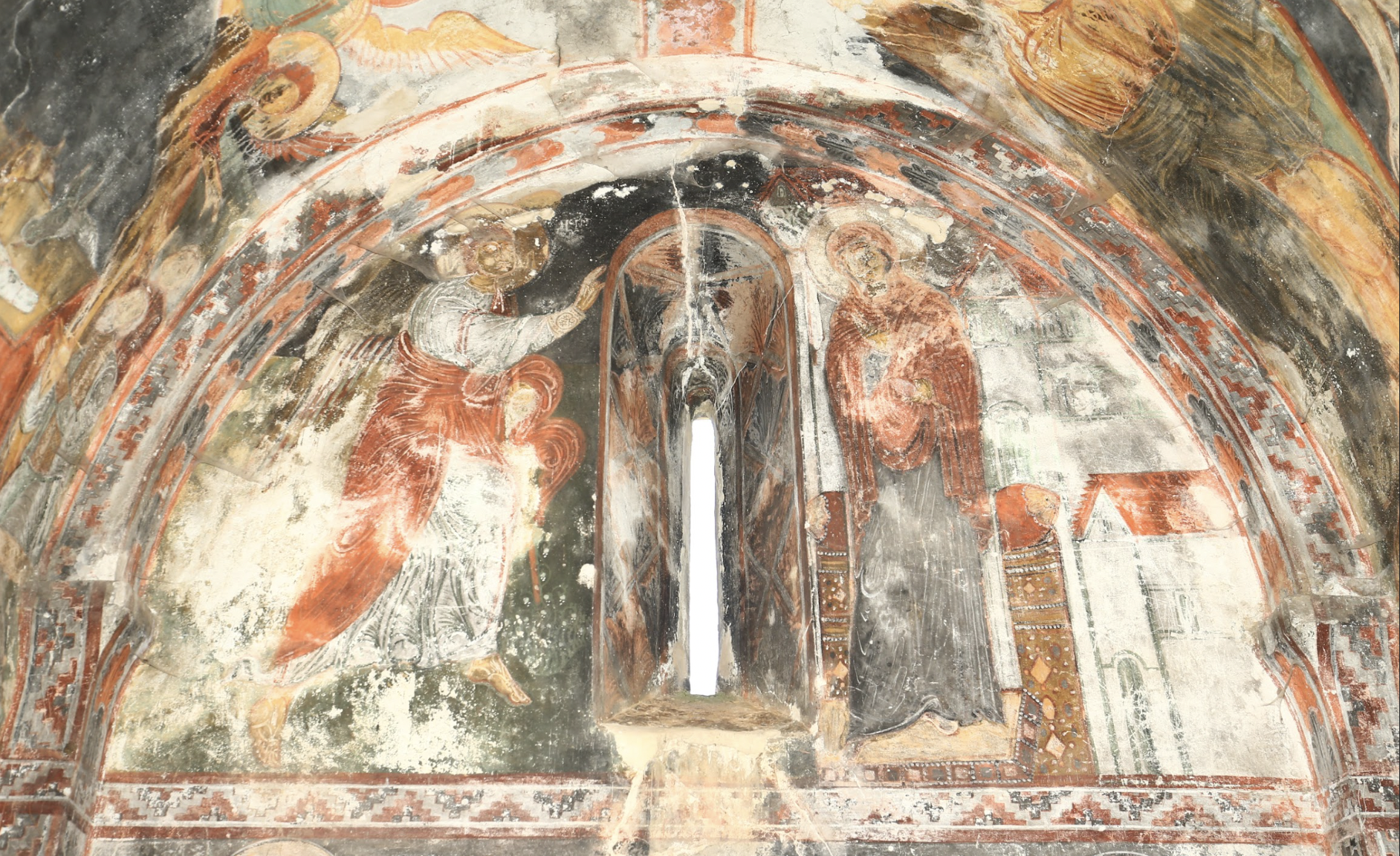
Annunciation
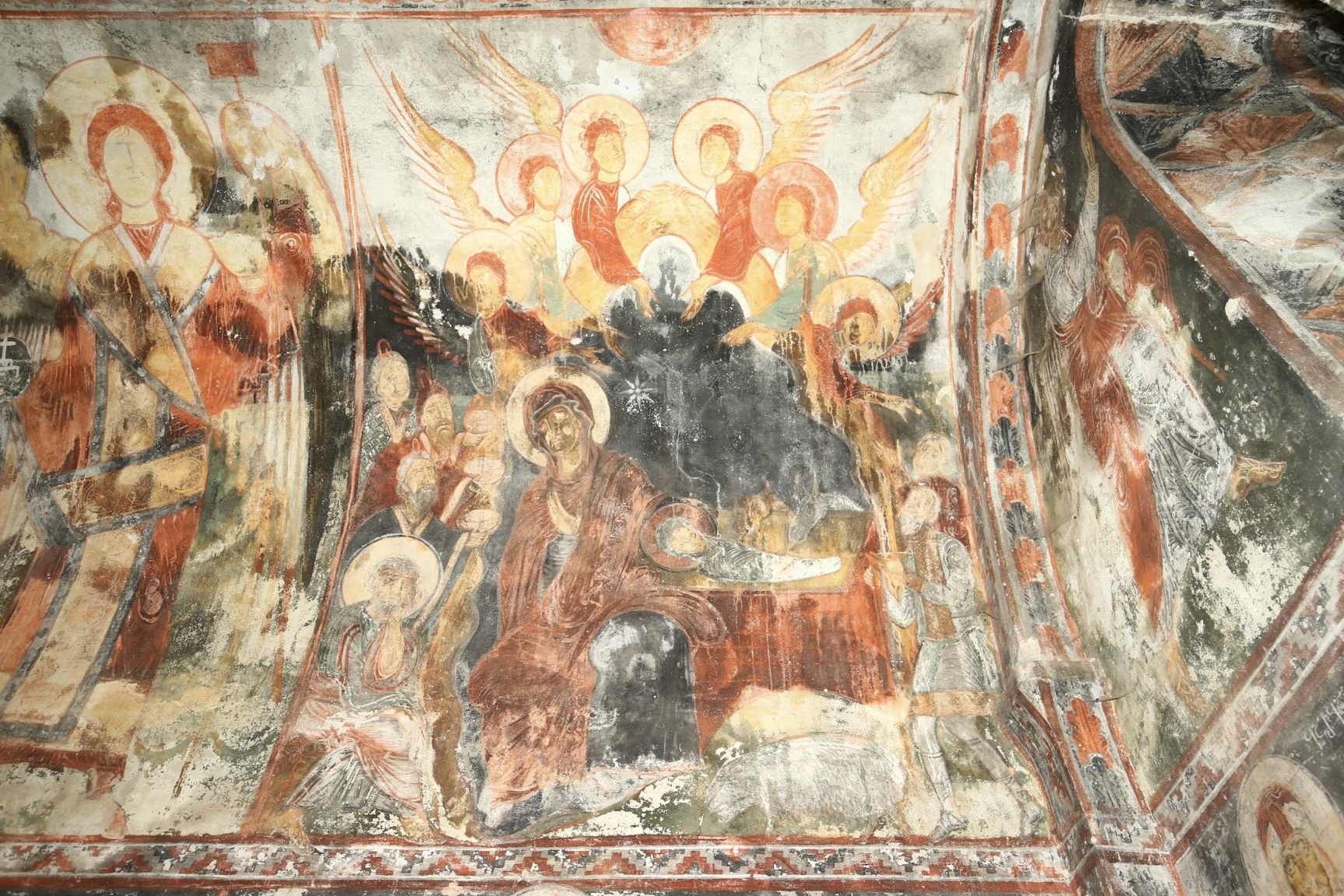
St. Archangel. The Nativity
The sanctuary apse bears the Deesis in the conch and the bishops in the lower register. Half-length figures of St. Cyricus and St. Julitta and St. Demetrios and St. Stephanos are portrayed on the top of the chancel barrier.
The role of the patron saints of the church, the Archangels, is specifically accentuated by placing monumental images of St. Michael and St. Gabriel facing each other on the eastern sections of the vault; St. Michael appears again on the northern wall, this time he is portrayed with Joshua at his feet.
The lower registers of the walls are taken up with large-scale images of the Virgin with Child and St. Anna, St. Barbara and St. Catharine; two mounted saints – St. George killing Diocletian and St. Theodore killing the dragon – are shown on the western sections of the northern and southern walls.
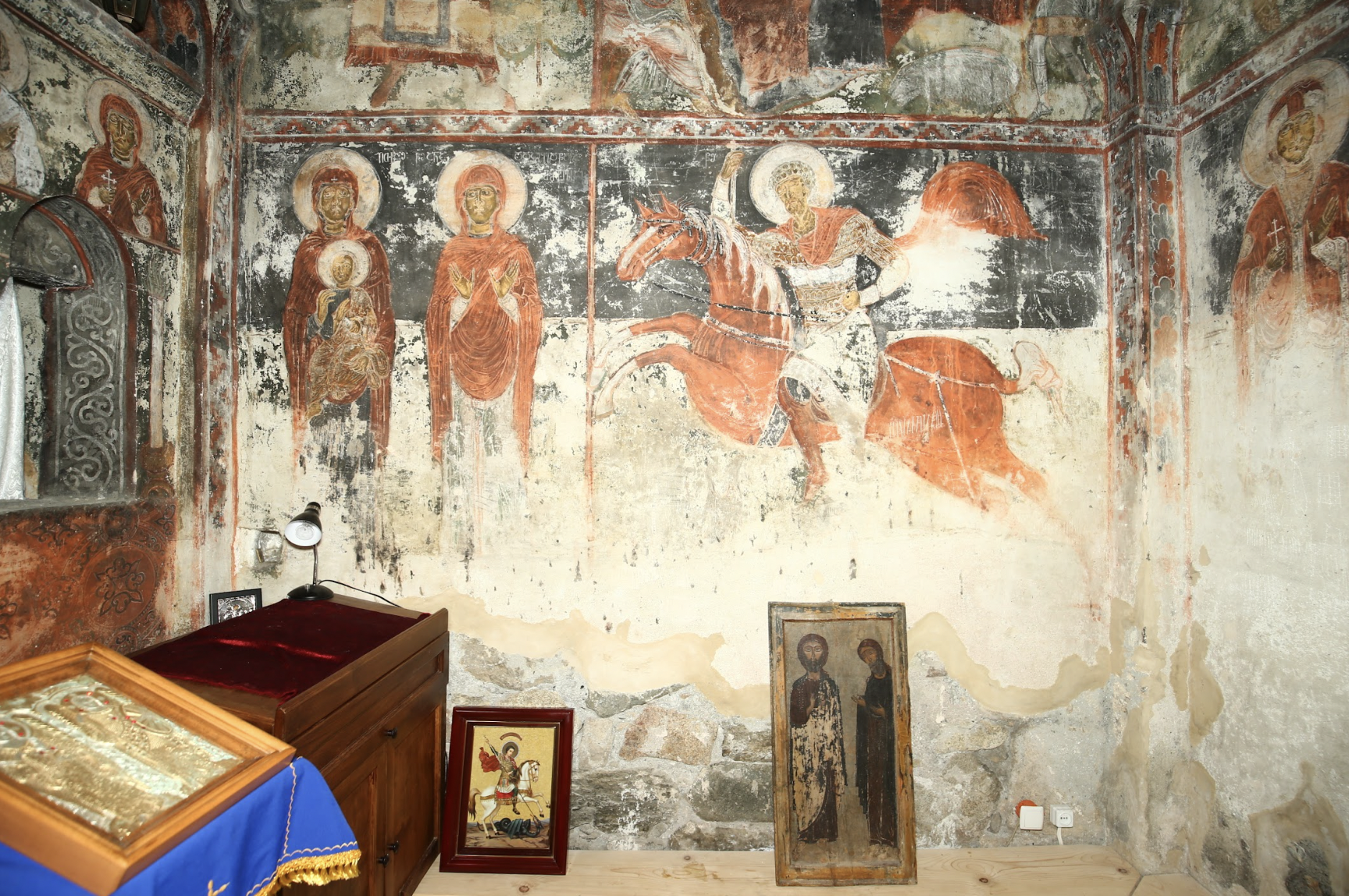
The Virgin and Child, St. Anna, St. Theodore
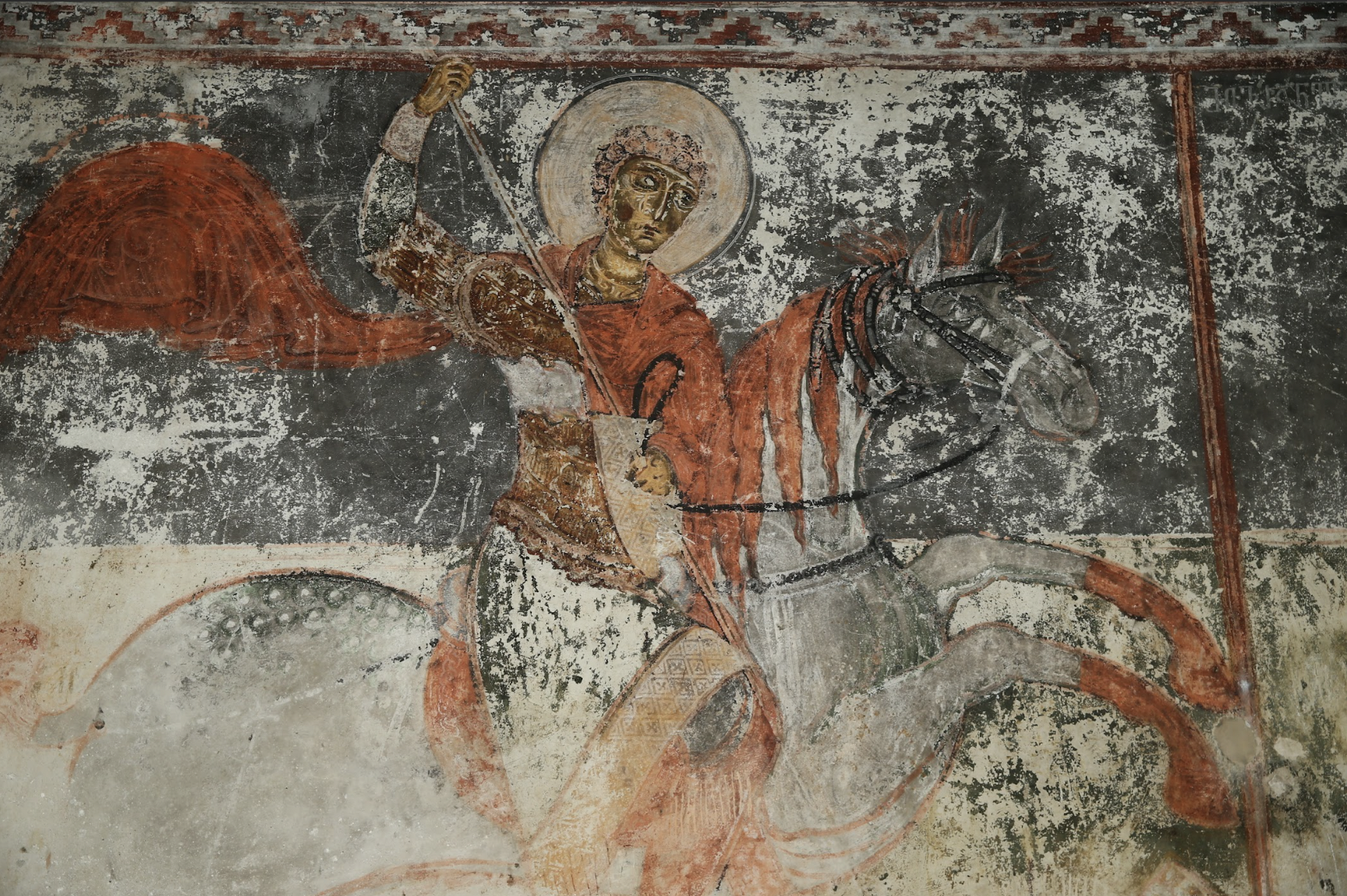
St. George

St. Theodore
The Iprari murals are marked by their monumentality, well-organized layout; the colouring is based on a rhythmic interchange between red ochre and warm greys and green that creates the harmonious tonality. Tevdore’s individual manner is best revealed in the expressive faces, with a strong and vigorous design distinguished by plastic rendering.
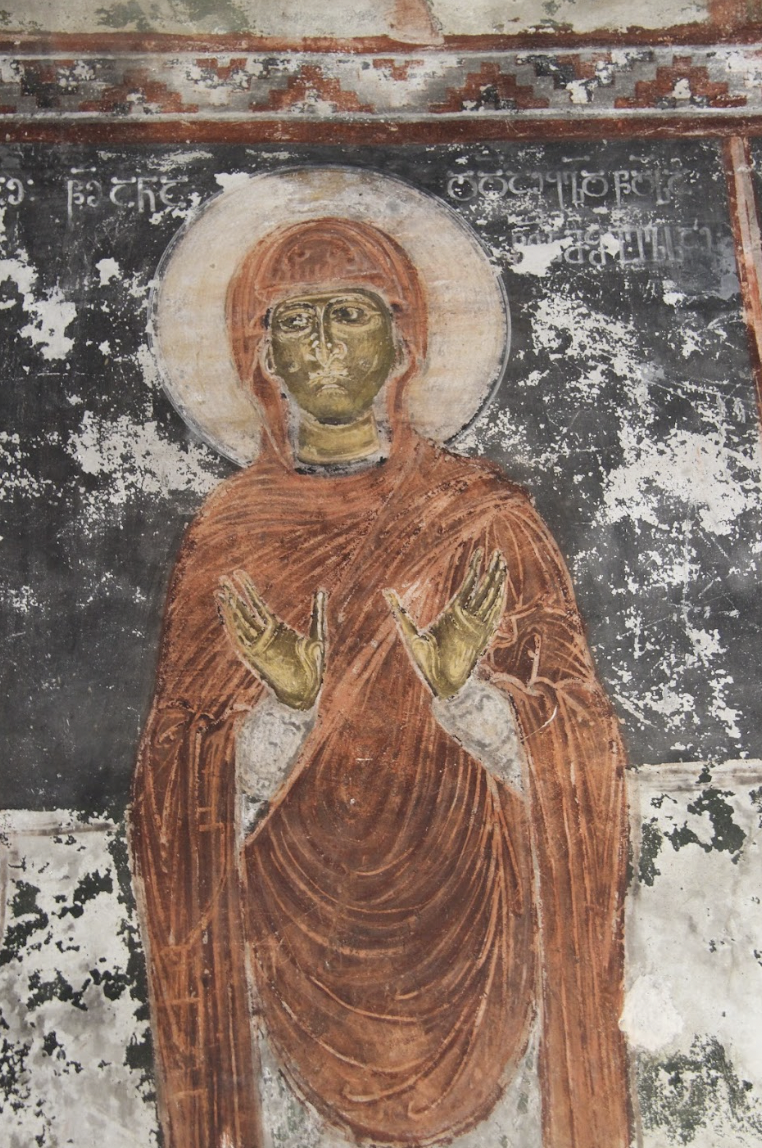
St. Anna

St. Demetrios
Iprari Church is painted on the exterior as well. Despite the loss of most of the murals on the south façade, it is still possible to discern fragments of seven fresco icons that once constituted the Great Deesis. The murals date from the 12th century. It is worthy of note that Svaneti is the only region in Georgia where the practice of painting church façades was widely spread.
Photos by Zura Tsertsvadze